The California Court of Appeal, 1st District has now issued an opinion certified for publication in an important apportionment case, City of Petaluma V. WCAB (Aaron Lindh) (see text of the decision below).
Lindh, a police canine officer, had injured his eye by receiving three to six blows to the head while doing training with a police dog. But Lindh was determined to have an underlying vasospastic abnormality.
The Court of Appeal decision overturns the WCAB panel decision which had rejected a finding of apportionment by the trial judge.
The decision backs the position of the employer and its amicus allies, i.e. that the QME’s apportionment of Mr. Lindh’s eye disability was legally appropriate. On the losing end are Mr. Lindh, the Workers’ Compensation Appeals Board, and CAAA, all of whom argued that the apportionment was legally impermissible on the facts.
In a blog post last month written just before the oral argument in the case, I summarized the issues and some of what was at stake. You can find that here:
http://www.workerscompzone.com/2018/11/15/the-lindh-case/
This case marks yet another loss for the applicant bar in a string of prominent post-2004 apportionment reform cases, all cited by the Lindh court. Those losses started with Escobedo v. Marshalls (2005) 70 CCC 604, continued through E.L. Yeager Construction v. WCAB (2006) 145 Cal. App. 4th 922, Brodie v. WCAB (2007) 40 Cal.4th 1313, Acme Steel v. WCAB (2013) 218 Cal. App. 4th 1137, and City of Jackson v. WCAB (2017), 11 Cal. App. 5th 109.
A key argument made against the apportionment of Mr. Lindh’s eye disability was that it was apportionment to a risk factor rather than to a cause of disability. This argument is rejected by the Court of Appeal, noting that the fact the QME “referred to this underlying condition as putting Lindh at “higher risk” of suffering the disability, does not change the fact that Lindh had an underlying condition……..that was, along with the work-place injury, a cause of his impaired vision.”
The Court of Appeal notes that “But even if characterized as a “risk factor”, his history of migraines reflected an underlying condition that in Dr. Kaye’s opinion was largely the cause of his loss of vision”.
Likewise, the Court of Appeal sweeps away arguments that distinguish cases based on degenerative disease and progressive disease process (such as in Escobedo, Acme Steel, City of Jackson and E.L. Yeager).
The court states that:
“Under the current law, the salient question is whether the disability resulted from both nonindustrial and industrial causes, and if so, apportionment is required. (See Brodie, supra, 40 Cal.4th at p. 1328; Jackson, supra, 11 Cal.App.5th at pp. 116–117;Acme Steel, supra, 218 Cal.App.4th at p. 1142.) Whether or not an asymptomatic preexisting condition that contributed to the disability would, alone, have inevitably become manifest and resulted in disability, is immaterial.”
Later in the opinion the 1st District panel (Justices Banke, Humes and Margulies) state that:
“There is also no merit to Lindh’s claim that there can be no apportionment to a condition that caused no disability prior to the work-related injury. By definition, an asymptomatic preexisting condition has not manifested itself and, thus, by definition has not caused a prior disability. (See E.L. Yeager, supra, 145 Cal.App.4th at p. 929 [“[P]rior disability or evidence of modified work performance is no longer a prerequisite to apportionment. If the presence of these factors is necessary to constitute substantial evidence, there would have been no purpose in changing the law.”].)”
As a result, the disposition is that the WCAB opinion and decision after reconsideration was annulled, and the matter remanded for an award apportioning Lindh’s disability 85% to preexisting condition and 15% to his industrial injury.
The facts of the Lindh case are unique, but the case may encourage defendants to step up their attempts to define underlying abnormalities or risk factors as indirect “causative factors” or “contributing causes”.
This decision will prove to be a bitter pill for many workers and their attorneys. On the most fundamental level, questions remain about when a risk factor or underlying abnormality is not just a risk factor but a preexisting condition or a contributing cause.
Here is the text of the decision in City of Petaluma V. WCAB (Lindh):
CityOfPetaluma(Lindh)(1stDCA)(2018)
Stay tuned.
Julius Young



